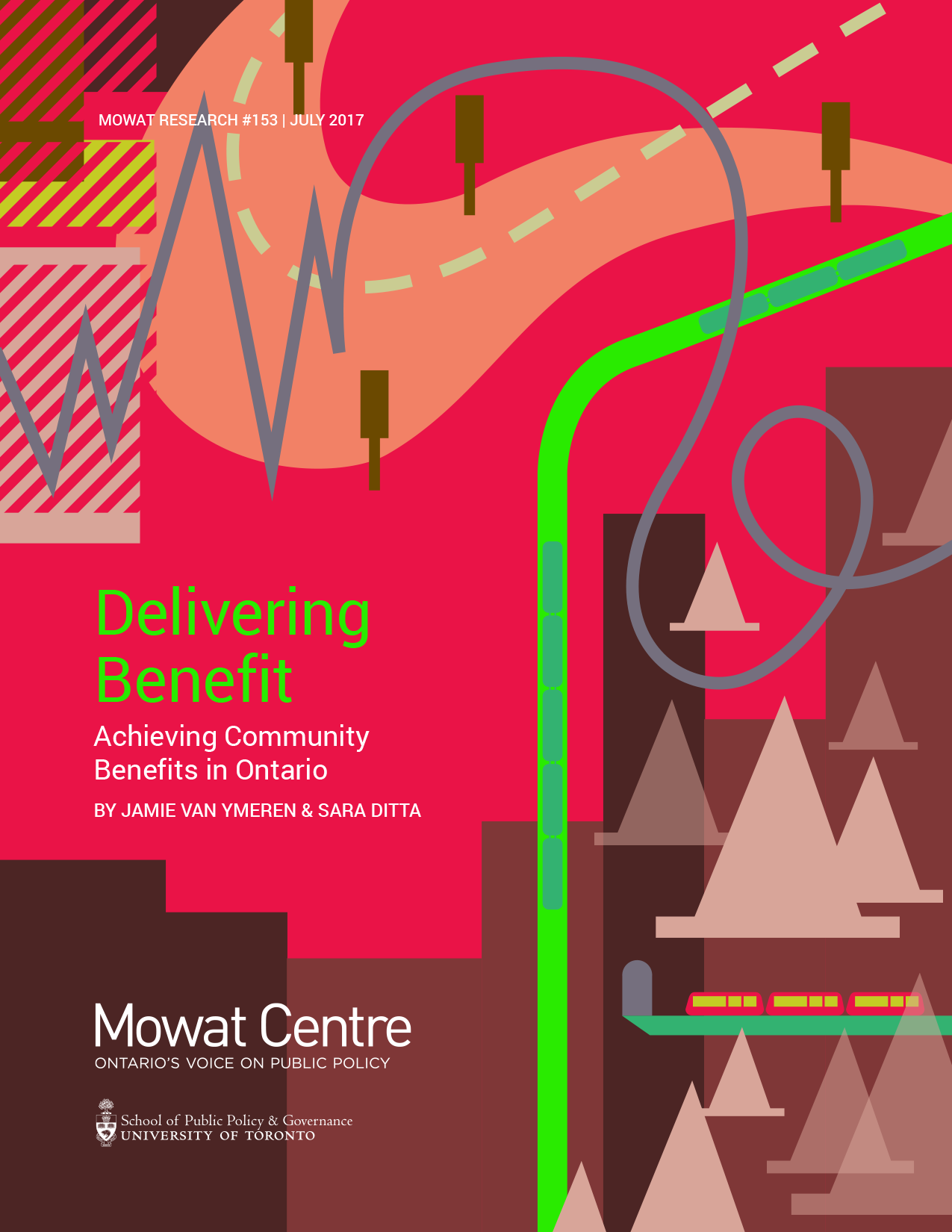July 19, 2017
Achieving community benefits in Ontario
This report examines the key success factors for designing effective community benefits requirements for large transit infrastructure projects and how their success can be monitored, tracked and measured – particularly for targeted training and recruitment initiatives.
The report offers a series of recommendations to policymakers to help them deliver on the promise of community benefits policies.
Executive Summary
Public investments in infrastructure have long been seen as a driver of economic growth and productivity. However, in recent years, unlocking the potential social value of these investments has also become a vital consideration for governments.
The basic premise behind community benefits approaches is that investment in public infrastructure and economic development projects can be better leveraged to create local economic value, as well as other social and environmental outcomes that strategically align with community goals and government mandates.
However, putting these concepts into practice can be difficult. When properly designed and implemented, community benefits and social procurement policies can ensure that benefits accrue to those living in communities. But, if developers and governments are unable to deliver upon their promises, they risk losing the trust of the communities in which they’re operating.
This report examines the key success factors for designing effective community benefits requirements for large transit infrastructure projects and how their success can be monitored, tracked and measured – particularly for targeted training and recruitment initiatives. It also offers a series of recommendations to policymakers across Ontario and, in particular, Metrolinx, as the agency moves to implement the promises outlined in its 2014 Community Benefits Framework.
Continue Reading
Community benefits approaches involve setting out contractual standards and requirements in government procurement processes and public works contracts to ensure that the benefits of public infrastructure investment flow into the communities where that infrastructure is being built.
The report distinguishes between UK-style approaches to “community benefits clauses” versus US-style approaches to “community benefits agreements”. Looking at Ontario’s legal environment and policy structures, it is argued that community benefits will most likely be achieved by embedding community benefits clauses into procurement contracts.
In jurisdictions that have successfully embraced community benefits clauses, policies that support the inclusion of clauses in contracts tend to have:
- standardized approaches and defined priorities,
- more similar contract requirements across the board,
- clear thresholds for when community benefits will be considered,
- defined targets in contracts,
- pre-determined mechanisms for reporting and enforcement.
Key Lessons
- Systems should be clear and aligned – from high-level regulatory frameworks through to the substance of individual contracts.
- The strength of community benefits and social procurement policies rests on the definitions of the “social value” or “community benefit” principles contained in them.
- Thresholds for consideration can spur policymakers to more systematically and thoroughly examine opportunities for community benefits on the projects they’re proposing as a matter of process.
- Policymakers can ensure that proposed community benefits align with broader policy frameworks and allow industry partners to make informed planning and tendering decisions by conducting community benefits needs assessments up-front.
- Since contracts are focused on direct benefits to local communities, terms must be defined, fulfilled, enforced and reported on in a way that ensures public accountability. At the same time, procurement processes must not be overly onerous and create unnecessary burdens for contract recipients.
- Clarity and predictability in procurement processes and expected contract terms are important for contractors in order to make effective planning decisions.
- Targets in contracts should be clear, meaningful, proportional, and defined up-front.
- Labour market intermediaries are used in many jurisdictions to help ensure that developers are able to meet targets and hire the populations that have been identified in community benefits clauses.
- To understand the long-term impact of what’s been achieved, policymakers should consider developing clear evaluation strategies and adopting standardized reporting requirements and performance indicators that directly align to policy objectives.
Authors
Jamie Van Ymeren
Sara Ditta
Release Date
July 19, 2017
ISBN
978-1-77259-049-4
Mowat Research
No. 153








